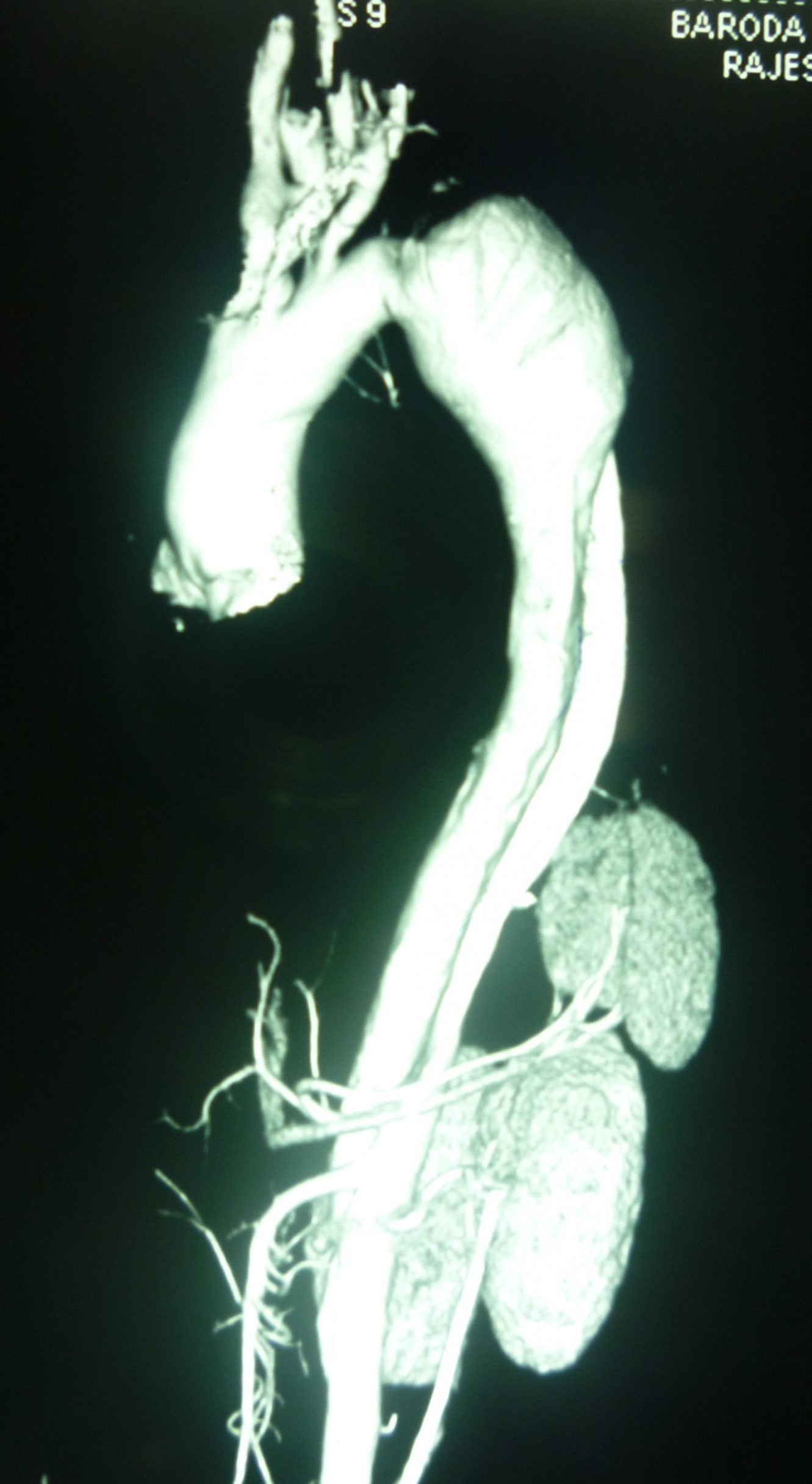1What is Aortic aneurysm?
Dilatation or ballooning of the abdominal aorta ( large blood vessel from the heart ) is known as an Aortic aneurysm.
If an aneurysm develops in the abdominal aorta it is called an Abdominal Aortic Aneurysm – AAA
If an aneurysm develops in the thoracic aorta it is called as Descending Thoracic Aortic Aneurysm - DTAA
If an aneurysm develops in the abdominal aorta it is called an Abdominal Aortic Aneurysm – AAA
If an aneurysm develops in the thoracic aorta it is called as Descending Thoracic Aortic Aneurysm - DTAA
2Why it develops?
It develops due to the Weakening of the Aortic wall which could be due to advanced age, disease, or injury
3What are the risk factors?
Age (>50 yrs), Smoking, Hypertension, Family history
4What are the symptoms?
No symptoms, severe abdominal pain/ chest pain / back pain
5How to diagnose Aortic aneurysm?
Through clinical examination, USG abdomen, CT Angiography helps in the diagnosis of AAA
6What are the treatment options?
- Open surgery wherein abdomen is cut open and diseased aorta is replaced with Tube graft
- Endovascular repair (EVAR / TEVAR) wherein a small cut is placed in the groin and diseased Aorta is repaired with Endograft. This is a relatively less invasive treatment modality
7Why do we treat Aortic aneurysm?
- For relief of abdominal pain
- To prevent rupture and subsequent death








